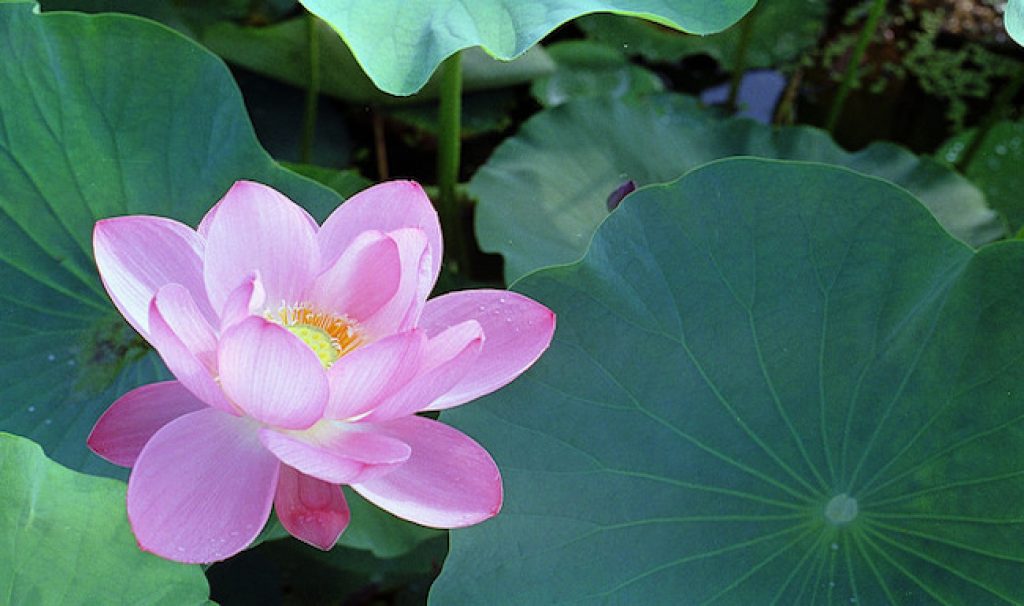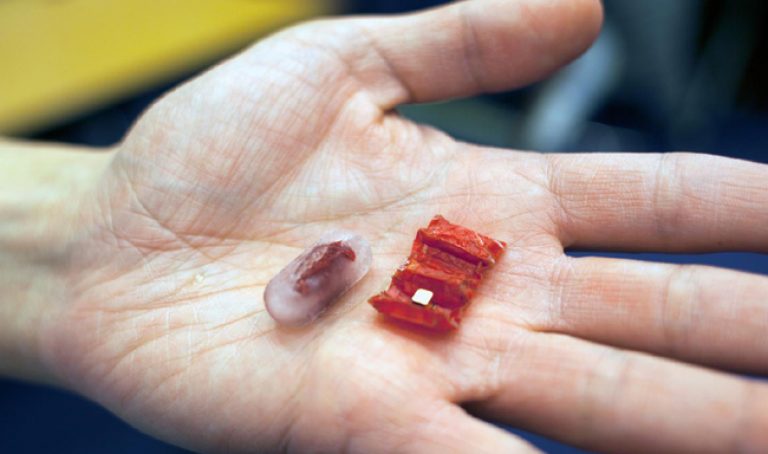
AsianScientist (Nov. 18, 2015) – Researchers have used lotus leaves to create a substance capable of almost total absorption of light across the entire visible spectrum. The new ‘biometamaterial,’ a thin gold film fabricated from a lotus leaf template, has been described in a paper published in Scientific Reports.
Metamaterials are man-made substances whose properties are determined by their meticulously-designed structure. For example, metamaterials can be fabricated so that they interact with light or sound in a specific way. Unique surface structures play a vital role in metamaterials, and scientists have begun looking to nature itself for patterned surfaces from which to draw inspiration.
The researchers took advantage of the unique structure of the cells on the surface of a lotus leaf. The cilia on the leaves are in the form of tiny, randomly-orientated, macaroni-like nanorods, each measuring around 100 nanometers (nm) in diameter. The team hypothesized that such a structure might confine light effectively.
The team, led by Professor Kotaro Kajikawa from the Tokyo Institute of Technology, coated a number of different leaves in a thin layer of gold film, applied in two different ways. Vacuum evaporation using thermal heating destroyed the nanorod structures on the leaf surface, but a spray ‘sputtering’ technique was far more successful. The resulting gold coating ranged in thickness from 10 nm to 30 nm on different samples. As well as lotus leaves, they also used leaves from three other plants as controls.
The researchers found that the 10 nm-thick gold biometamaterial created using lotus leaves exhibited reflectivity of less than 0.01 through the whole visible spectrum. Calculations showed that the low reflectivity, which results in almost complete absorption of light on the material’s surface, appears to stem from the randomly-orientated nanorods on the leaf’s surface.
Further work is in progress to see if Kajikawa and his team can find an easy and effective way to remove the gold biometamaterial from the leaf template once it is created.
The article can be found at: Ebihara et al. (2015) Biometamaterials: Black Ultrathin Gold Film Fabricated on Lotus Leaf.
———
Source: Tokyo Institute of Technology; Photo: Shuzo Serikawa/Flickr/CC
Disclaimer: This article does not necessarily reflect the views of AsianScientist or its staff.












